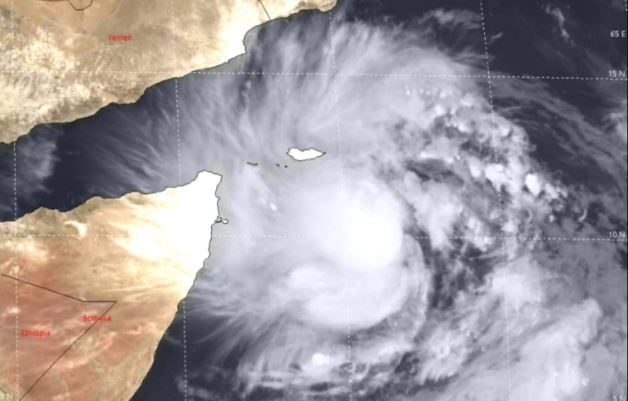
Tropical cyclone Sagar slammed into northwestern Somalia over the weekend, after forming in the Gulf of Aden, killing at least 31 people in the region. The storm made landfall farther west in the North Indian Ocean basin than any previous storm on record.
Now, a second cyclone has spun up just to the east, due south of the Arabian Peninsula. The rapidly organizing storm is eyeing Oman's southern coast, where it may make landfall at hurricane-strength late this week.
The Joint Typhoon Warning Center says the cyclone is over very warm waters, between about 87 and 90 degrees. "Extremely warm sea surface temperatures and favorable environmental conditions will lead to steady intensification," the center wrote in its latest update.
The center forecasts the storm to make landfall near Salalah along Oman's southeast coast between Friday and Saturday, with maximum sustained winds of more than 90 mph. Salalah is Oman's second-largest city with a population of about 200,000. Assuming the storm remains on its current track, the area can expect torrential rain, damaging winds and dangerously high seas.
Brian McNoldy, Capital Weather Gang's tropical weather expert, said that since 1980, only three "hurricane-strength" storms have made landfall within 100 miles of the Oman-Yemen coast, and none near Salalah.
The sinking air on the storm's east side may be intensifying a heat wave in Pakistan and northern India, according to Ryan Maue, a meteorologist at Weather.us. The heat wave has led to 65 deaths in Karachi as temperatures exceeding 110 degrees bake the city.
While Oman braces for this storm, Somalia is in recovery mode in the wake of tropical cyclone Sagar. After Sagar struck Saturday with 60 mph winds, Weather.com described it as the strongest tropical storm to ever hit the country.
A year's worth of rain fell in a few days, leading to flash flooding that reportedly displaced tens of thousands of people. "Initial reports also indicate the loss of a large number of livestock with at least 700 farms destroyed," writes ReliefWeb.



Reader Comments
to our Newsletter